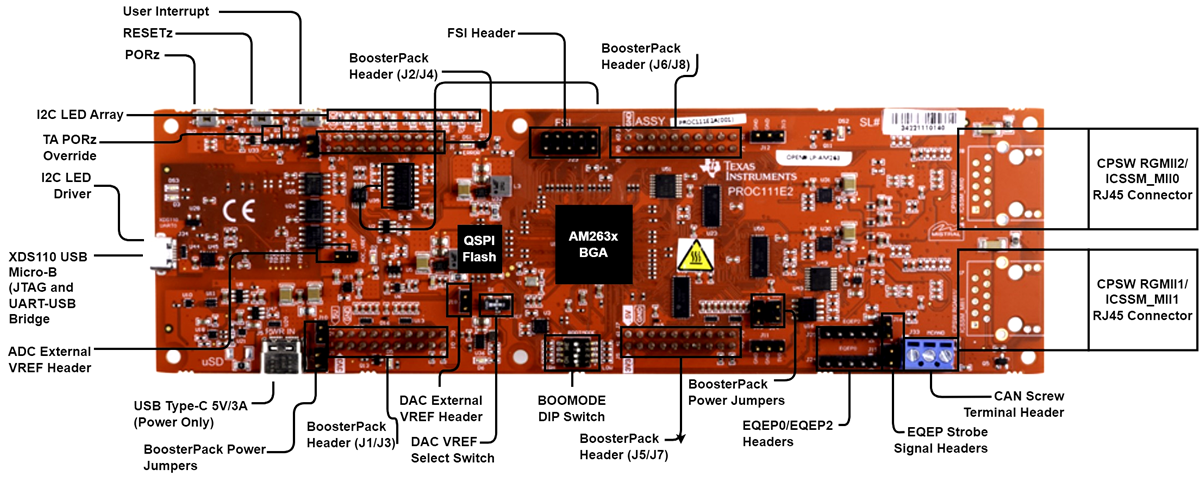TIDUF67 April 2024 – December 2024
- 1
- Description
- Resources
- Features
- Applications
- 6
- 1System Description
- 2System Overview
- 3System Design Theory
-
4Hardware, Software, Testing Requirements,
and Test Results
- 4.1 Hardware Requirements
- 4.2 Software Requirements
- 4.3 Test Setup
- 4.4 Test Results
- 4.5 Adding Additional Functionality to Motor Control Project
- 4.6 Building a Custom Board
- 5General Texas Instruments High Voltage Evaluation (TI HV EVM) User Safety Guidelines
- 6Design and Documentation Support
- 7About the Author
4.3.1 LP-AM263 Setup
LP-AM263 is a low-cost development board for the TI Arm®-based real-time microcontrollers. This LaunchPad kit offers extra pins for development and supports the connection of two BoosterPack™ plug-in modules.
- For more details about the LP-AM263 , see the LP-AM263 LaunchPad User's Guide.
- Make sure that the boot switch on the
LP-AM263
are set as shown in Figure 4-6.
- For QSPI_D0 (SOP0), position the switch to the LEFT (Logic High).
- For QSPI_D1 (SOP1), position the switch to the LEFT (Logic High).
- For SPI0_CLK_pad (SOP2), position the switch to the Right (Logic Low).
- For SPI0_D0_pad (SOP3), position the switch to the LEFT (Logic High).
- Make sure that the DAC VREF Switch (S1) on the LP-AM263 is set on AM263x on-die LDO for correct CMPSS Operation.
 Figure 4-6 LP-AM263 LaunchPad™ Board Overview and
Switches Setting
Figure 4-6 LP-AM263 LaunchPad™ Board Overview and
Switches Setting